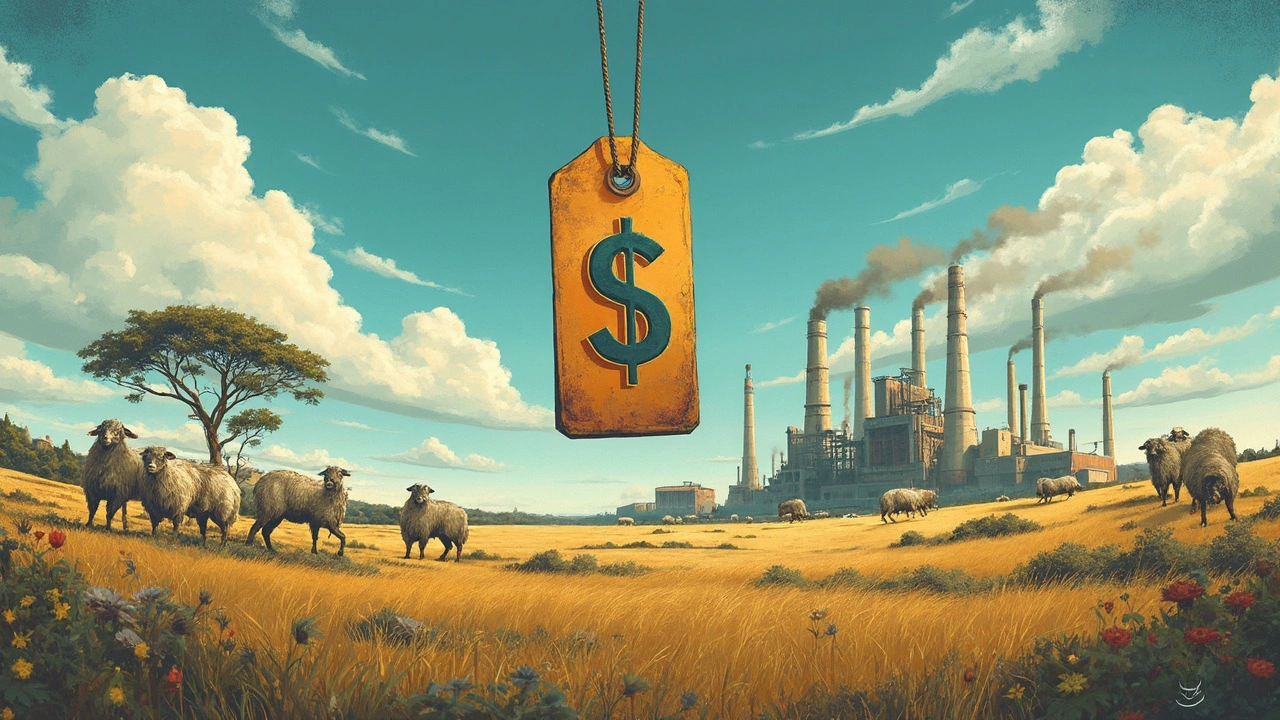Think UGGs are harmless because they’re everywhere? It’s easy to get swept up by the cozy look and celebrity hype, but there’s more under the surface of those well-known boots. When you buy a pair, you’re not just paying for comfort—you’re making a decision that affects animals, the planet, and your wallet in ways most people don’t consider.
Let’s break down why it’s time to question the love for UGGs. I’ll walk you through what’s going on behind the scenes, from how they're made to what your money is really supporting. If you’re after boots that feel good without the guilt, stick around. There are smart, humane choices out there if you know where to look.
- What’s Really Behind UGGs
- The Environmental Cost
- Animal Welfare and Ethical Concerns
- Smart Alternatives and Tips
What’s Really Behind UGGs
When you see UGGs in store windows or scattered across social feeds, they just look like ordinary women's boots. But here’s the thing: these boots aren’t made from synthetic fluff or wool alternatives. Classic UGGs are made using real sheepskin—meaning both the fleece and the hide—mostly from sheep farmed for meat. The company uses Merino sheepskin, which is soft, but comes at a bigger ethical and environmental cost than you might think.
The story doesn’t end at raw materials. Manufacturing these boots is mostly done overseas, primarily in countries with lower labor costs. That means there’s often little oversight on worker rights or safe conditions. UGG is now owned by Deckers Brands, an American company, but most production happens in China and Vietnam.
Then, there’s quality—you might assume you’re paying extra for durability or craftsmanship, but that’s not always true. Plenty of buyers report their boots sag, lose shape, or even begin to smell after a cold and wet winter. Water and salt stains are super common, and these boots soak through quickly if you skip treating them, so don’t expect them to last through harsh weather unless you put in extra effort.
If you’re after that iconic, slouchy look, there’s no denying UGGs are instantly recognizable. But that also means you’re getting a style that’s easy to copy. Tons of fast fashion brands churn out lookalikes at a fraction of the price, most of which use synthetic materials and avoid animal hide altogether. Before you fall for the hype, ask yourself if you want to support the real deal—or the entire system that keeps pushing the same look season after season.
So, what are you actually buying into? Beyond the brand, the UGGs story is a mix of animal use, overseas mass production, and a lot of marketing. If you dig below the surface, you’ll find that the boots you see on every corner are anything but simple.
The Environmental Cost
When you zip up a pair of UGGs, you’re also stepping into a pretty big mess for the environment. First up, real UGG boots are made mostly from sheepskin and wool. Producing sheepskin and wool isn’t just a by-product of shepherd life—it creates tons of carbon emissions. Cows get blamed a lot, but sheep also contribute a surprising amount of methane, a greenhouse gas that’s even more powerful than carbon dioxide. In fact, the wool industry produces almost one-tenth the emissions of global livestock farming, just behind beef and milk production.
Then there’s the water nightmare. Raising sheep guzzles water for both the animals and the feed crops they eat. Sheepskin has to be processed with strong chemicals to stop it from rotting, so tanneries dump a cocktail of toxic stuff, like chromium salts, into rivers. Local communities near tanneries in places like China and Australia (where a lot of sheepskin comes from) often report nasty side effects—think headaches, skin problems, or worse—because their water gets contaminated.
And let’s talk waste. Each year, the fashion industry trashes mountains of old boots, including UGGs. These boots don’t break down like banana peels. The mix of leather, synthetic glues, and dyes can stick around for decades in landfills. If you’ve ever tossed a pair, you’re basically leaving them for the next generation to dig up.
So next time you’re thinking about grabbing those cozy sheepskin boots, remember the true cost isn’t just what hits your bank account. The UGGs footprint on our earth is pretty massive—and it adds up fast. If you want to shrink your own impact, keeping this in mind makes shopping a whole lot smarter.

Animal Welfare and Ethical Concerns
When you hear about UGGs, you might picture soft, fluffy comfort. But the story gets a lot more complicated when you see how these boots are made. Every pair of UGGs relies on real sheepskin, which means sheep have to lose their lives for every single boot. According to PETA, each year millions of sheep are killed globally for their fur and meat, with UGGs contributing to that demand. The company says it sources sheepskin as a “by-product” of the meat industry, but it still pushes the need for more animals to be bred and slaughtered.
Some folks think the sheep get a haircut—nope! For sheepskin boots, the entire hide is needed, so there’s no way to separate the leather from the animal without killing it. Even suppliers with "ethical" labels still participate in factory farming, where sheep can be kept in crowded, stressful conditions.
Animal cruelty doesn’t stop at shearing. Investigations in Australia, one of the top sources for UGGs’ sheepskin, have highlighted the painful practice of “mulesing.” That’s where pieces of skin are cut off sheep to prevent flystrike, usually with no pain relief. Many leading animal rights groups and even some fashion brands have called for a stop to these practices, but they’re still common in the sheepskin trade.
If numbers help it sink in, check out this quick table showing how big the demand is:
| Year | Approx. Sheep Killed for Sheepskin Worldwide |
|---|---|
| 2020 | 146 million |
| 2022 | 150 million |
All this just for fashion that lasts a winter or two? It doesn’t add up, especially with other choices out there. For anyone who wants to feel good about their boots (not just feel good in them), it makes sense to look at what brands are really doing and skip ones that don’t take animal welfare seriously.
Smart Alternatives and Tips
If you’re finally ready to say goodbye to UGGs, you don’t have to settle for cold feet or boring style. There are tons of footwear brands now focused on comfort, warmth, and a lighter impact on both animals and the environment. Here’s how to find boots that give you all the cozy feels—without the ethical baggage.
First off, check out vegan and cruelty-free boot brands. Some good picks are Will’s Vegan Store, Matt & Nat, and Bhava. Unlike UGGs, which are made from animal sheepskin, these boots use plant-based or recycled materials designed to keep you warm all winter. Will’s Vegan Store, for example, uses Italian vegan leather and recycled rubber soles. Their boots even come in recycled packaging, so it’s a win for your feet and the planet.
- Look for boots made with recycled polyester, such as the ones from Native Shoes or Rothy’s. These keep plastic bottles out of landfills and offer solid insulation—without animal parts.
- Choose natural alternatives like cork or organic cotton lining. Some companies, like Vegetarian Shoes, make boots that look like the real thing but are made with eco-friendly and renewable material.
- If you want durable boots for harsh winters, check for waterproofing that’s free from heavy chemicals. Palladium and The North Face now make boots using eco-friendly water-repellent tech.
It pays to read the labels or product pages before you buy. When you see certifications like "PETA Approved Vegan" or "Global Recycled Standard," you know you’re avoiding some of the worst eco and ethical problems.
One last tip: buying less and choosing better always beats fast fashion. Nice boots might cost a bit more up front, but they’ll last longer and you’ll help push the market away from business models that harm animals and the earth. Besides, nothing’s cooler than rocking boots you can actually feel good about. If you want top comfort with a clear conscience, these new options truly beat the old-school UGGs every time.

